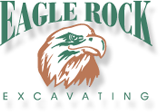Included UV radiation as well as aesthetic glow for pedestrians are among the numerous possible influences researchers list as reasons to re-evaluate reflective sidewalks.
A white paper produced by The National Asphalt Sidewalk Organization as well as the State Asphalt Pavement Associations recently attracted focus by asserting that reflective pavements, which are promoted in programs like LEED for alleviating the urban-heat-island effect, can be doing even more harm than great. Nonetheless, the conclusions attracted from limited field research study are sketchy, increasing questions about whether the asphalt industry introduced predisposition.
The record, entitled “Unintentional Effects: A Research study Synthesis Analyzing using Reflective Pavements to Mitigate the Urban Warmth Island Impact,” says that non-roof pavement with a high solar reflective index (SRI) could mirror solar radiation in a way that creates undesired ground-level effects– principal amongst them increased cooling tons from shown warmth absorbed by nearby structures.
However, as co-author Zhihua Wang, Ph.D., himself told EBN, the record’s literary works evaluation is “concentrationed on one side of the tale,” and also the research study is initial. For example, to research how successfully reflective pavements reduce overlying air temperatures, the scientists kept track of air temperature levels just five feet above small, 12′ x 12′ parts of reflective and also non-reflective surface areas. Unsurprisingly, they discovered little difference in air temperatures. “The [field research study] is not extremely depictive of the heat-island result,” according to Wang. “It is much more representative of basic physics.”.
That said, Wang assists the record’s conclusion that porous asphalt and pervious concrete are most likely much better products to mitigate the urban-heat-island impact due to their lower nighttime surface temperature level, as observed in the very same research study. The writers prepare to release their research for peer evaluation.
